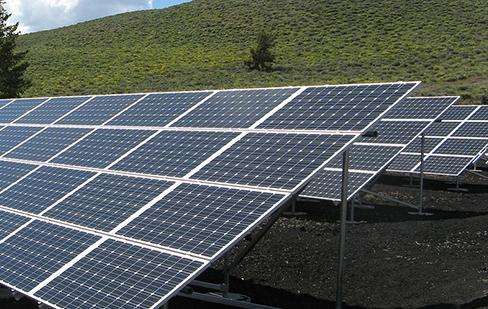Sawai Generator Tips: This situation is mainly because your generator may be overloaded!
Causes of chimney fires in gasoline generators
Chimney fires in gasoline engines are usually caused by unburned fuel or oily deposits coming out of the chimney as well as high temperature gases. It is caused by the recombustion of air, that is, the continuation of the fuel combustion process in the cylinder. Let's take a look at the detailed explanation from generator accessory manufacturer Sardon.
1. Sparks formed by burning oil mist are difficult to detect during the day. Small, short light pink sparks can be seen coming out of the chimney. Most of the sparks go out in the stream of smoke that follows them, without any scale or black particles falling. This situation often occurswhen the gasoline engine is overloaded, the fuel atomization in some cylinders is poor, or the air supply to the cylinder is insufficient. The fuel injected into the cylinder cannot be completely burned and there is excessive oil mist or fine oil droplets. in the cylinder are evacuated by the high temperature. When gas is fed directly out of the chimney, it burns when it encounters oxygen.
2. The sparks formed by burning residual oil are slightly longer in shape and darker in color than those above. They rush into the sky from the chimney and drift with the wind before dying out. themselves, fine particles of carbon and soot are released. This usually occurs when some injectors in a gasoline engine drip oil or have poor combustion during low load operation. Especially whenhe exhaust system temperature and pressure are low for a long time, unburned oil often accumulates in the exhaust port, even if. he is carried away. It is also difficult to be ignited by low temperature gas when it comes out of the chimney. Some old gasoline engines use the boiler exhaust gas bypass method to vent the gas directly to avoid contamination of the heating coil in the boiler. On modern ships, most bypass smoke exhaust pipes have been removed. The gas can only be discharged through the exhaust gas boiler, and the exhaust back pressure increases. Therefore, the accumulation of oil in the flue of a two-stroke gasoline engine operating at low load will gradually increase. The accumulated residual oil has undergone a physical and chemical preparation process before ignition. Wherehas enough air, when the exhaust temperature is higher than 210°C or an open flame is encountered, it will catch fire at the chimney outlet inside the exhaust. pipe.
3. Sparks formed by the combustion of soot deposits. Most sparks emitted from the chimney are plate-shaped. Sparks usually occur shortly after travel and 10 to 15 days after travel, and the flame duration varies from half an hour to three hours. During the day it is not noticeable because of the light, but at night it is very shocking. This type of sparkle has a large bright spot, is black and red, and lasts a long time. Ashes and solid particles of different shapes come out of the chimney with the spark. They often fall onto the deck and continue to burn. which can easily cause fires. Generally speaking, in the exhaust system, there is little fire inthe pipeline section from the compressor outlet to the exhaust gas boiler inlet, and there is not much soot on the superheated steam coil of the exhaust gas boiler. However, dense heating fins are often found on saturated steam coils and numerous solid deposits on the funnel-shaped parts of exhaust gas boilers. These deposits are the main source of sparks.
The above are the reasons for the chimney fire of gasoline generators. I hope this information can be useful to you. Below we will focus on.Preventive measures and solutions:
Preventive measures for gasoline generator chimney fire:
< /p>
1. Keep the gasoline engine cylinder Combustion in good condition;
2. Strengthen the monitoring of the combustion process of each cylinder and detect the conditionss abnormal timely
< p> 3. Strengthen the management of exhaust gas boilers to maintain good combustion effects;
4. Regularly add suitable carbon removal agents and other chemicals to the exhaust pipe or boiler exhaust gas; , In order to prevent scale and clean the system, carbon deposits on the pipe wall can be softened and removed, and even burned after lowering the ignition point;
5. In order to ensure the safety of the tanker, the chimney. A sprinkler system is installed inside.
Emergency Treatment for a Gasoline Generator Chimney Fire
1. If the first type of spark occurs, the load of the gasoline engine should be reduced immediately or stop the vehicle slowly, investigate the cause and eliminate the fault before continuing to use it, then increase the loadrequired once smoke exhaust is normal;
2. Whether the second or third Sparks should be able to continue to "spray" as long as the environment permits, so that oily deposits in the exhaust system can be taken away and burned as much as possible. However, maintenance, management and. fire prevention of gasoline engines and exhaust gas boilers should be strengthened;
3. Except for overheating of individual cylinders or local exhaust pipes requiring slowdown due to excessive fire, the gasoline engine must continue to run at a higher load;
p; >
4. Do not use fire extinguishing equipment, especially CO2 fire extinguishing equipment, to prevent high temperature metal from exploding due to a sharp drop in temperature.
DocuReference:
http://www.sadengdongli.com/faq/135.htmlI hope this is helpful to you Helped!














